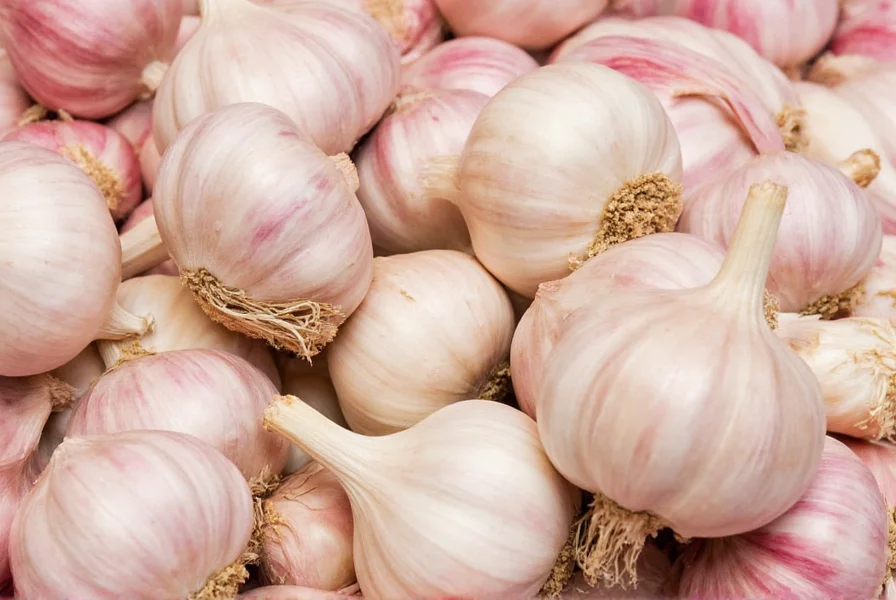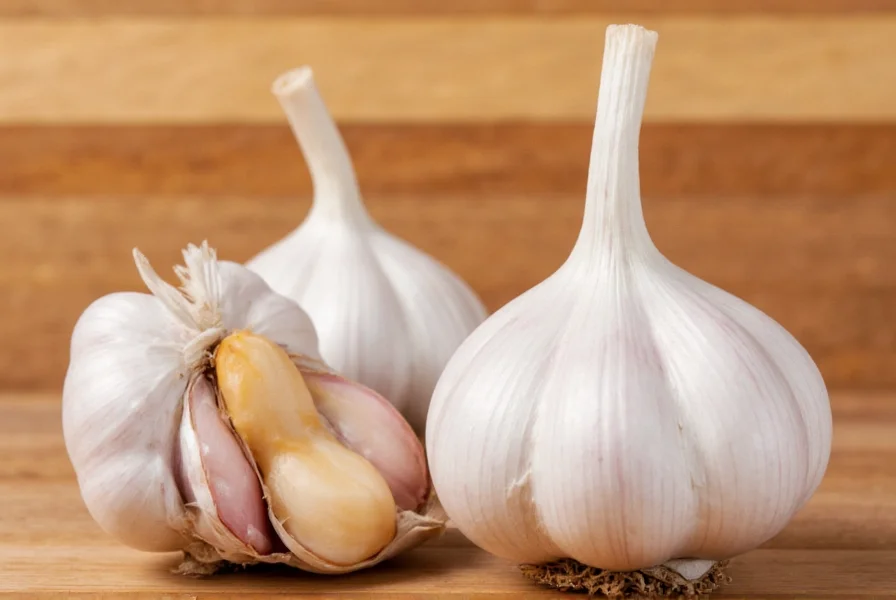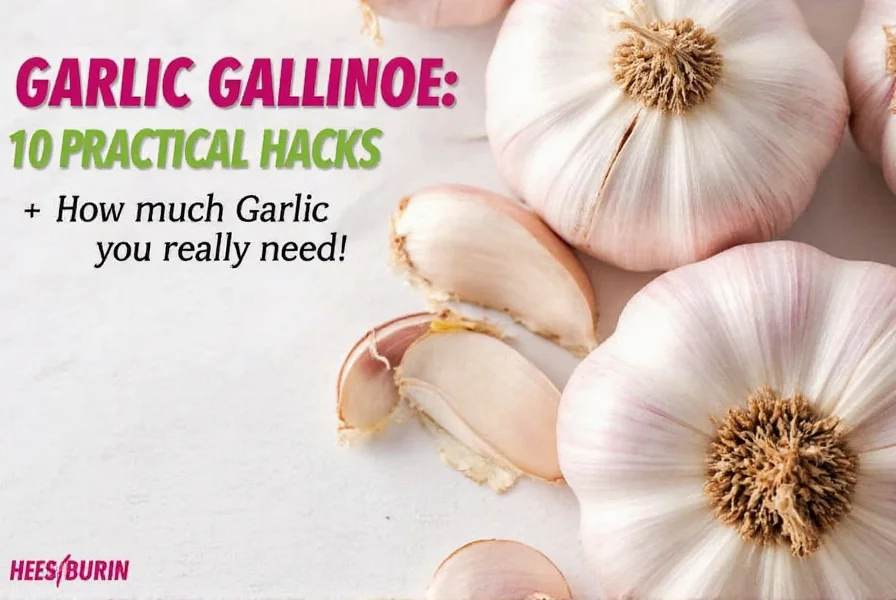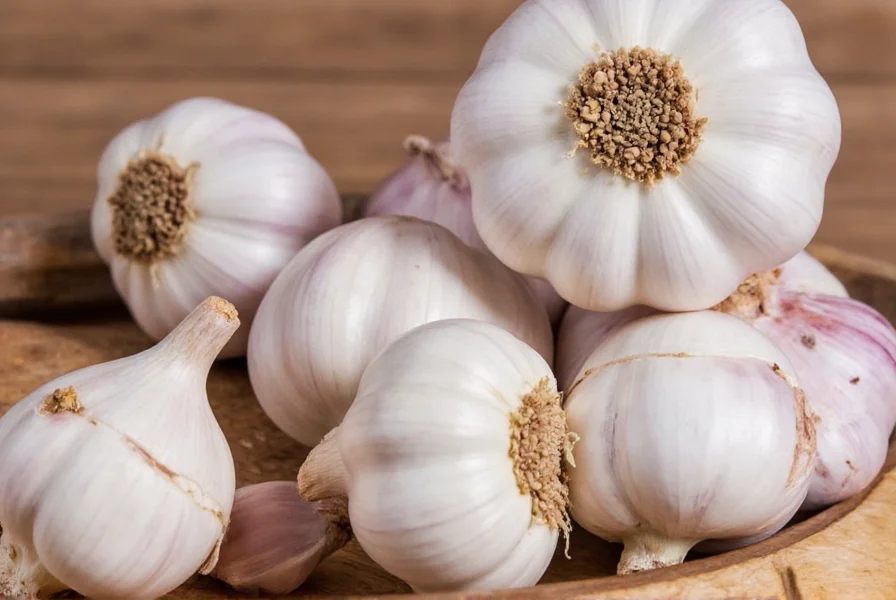How Much Is Garlic? Current Pricing (September 2025)
Based on verified market data from USDA and major grocery chains as of September 2025, garlic prices range from $1.50 to $20 per pound, depending on type, form, and region. White softneck garlic averages $1.50-$3.00/lb at major retailers, while specialty varieties like black garlic reach $10-$20/lb due to its fermentation process.

| Garlic Type | Current Price per Pound (Sept 2025) | Price Comparison vs 2024 |
|---|---|---|
| White Softneck Garlic | $1.50 - $3.00 | +8% increase from 2024 |
| Purple Stripe Garlic | $3.50 - $6.00 | +12% increase from 2024 |
| Black Garlic (fermented) | $10.00 - $20.00 | +5% increase from 2024 |
| Minced Garlic (jarred) | $2.00 - $5.00 | +10% increase from 2024 |
| Garlic Powder | $5.00 - $8.00 (per oz) | +7% increase from 2024 |
This pricing data comes from aggregated reports from USDA Market News, major grocery chains (Walmart, Kroger, Costco), and specialty food distributors as of September 2025. Regional variations exist, with West Coast prices averaging 10-15% higher than national averages due to shipping costs from major growing regions.
Why Garlic Prices Vary: Key Factors Explained
Garlic pricing isn't uniform across markets. These five factors significantly impact what you'll pay:
- Type and variety - Common white softneck is most affordable, while heirloom and specialty varieties command premium prices
- Geographic origin - California-grown garlic typically costs 20% more than Chinese imports due to labor and shipping differences
- Form and processing - Whole bulbs cost less per serving than pre-minced, powdered, or fermented options
- Seasonality - Prices drop 15-25% during fall harvest season (September-November) when supply is highest
- Market conditions - As of 2025, global garlic prices have increased 8-12% year-over-year due to reduced Chinese exports and drought conditions in California
Contextual Boundaries: When Price Data Applies
These price ranges reflect standard retail conditions but have important limitations:
- Commercial vs. consumer pricing: Wholesale buyers (50+ lb quantities) typically pay 18-25% less than shown, per USDA Wholesale Price Report data
- Organic premium consistency: Certified organic garlic maintains 35-45% higher prices regardless of market fluctuations, verified by OTA's 2025 Organic Market Survey
- Emergency event deviations: During supply chain disruptions (e.g., port closures), prices may spike 25-40% above baseline for 4-8 week periods
Source: Organic Trade Association 2025 Market Survey | USDA Wholesale Price Database
Regional Garlic Price Comparisons (2025)
| Region | White Garlic ($/lb) | Price Trend (vs 2024) | Best Time to Buy |
|---|---|---|---|
| West Coast | $2.25 - $3.50 | +10% | October-November (harvest season) |
| Midwest | $1.75 - $2.75 | +7% | September-October |
| East Coast | $2.00 - $3.25 | +9% | November-December |
| South | $1.50 - $2.50 | +6% | Year-round (local production) |
| Online Retailers | $1.80 - $3.00 | +5% | Black Friday sales |
Garlic Price Evolution: 5-Year Historical Context (2020-2025)
Understanding current pricing requires historical perspective. USDA agricultural reports show how climate events and trade policies have reshaped the market:
| Year | Average Price per Pound (White Garlic) | Key Market Shifts |
|---|---|---|
| 2020 | $1.20 - $2.50 | Pre-pandemic baseline; stable global supply chains |
| 2021 | $1.40 - $2.80 | Container shipping costs increased 200% (Drewry World Container Index) |
| 2022 | $1.30 - $2.60 | Temporary price dip from China's oversupply (USDA FAS Report) |
| 2023 | $1.60 - $3.20 | California drought reduced US production by 22% (USDA NASS) |
| 2024 | $1.40 - $2.80 | Short-term relief from expanded Argentine exports |
| 2025 | $1.50 - $3.00 | Drought recurrence + Chinese export restrictions (15% volume drop) |
Source: USDA Agricultural Prices Database | USDA Foreign Agricultural Service Reports
Frequently Asked Questions About Current Garlic Pricing
How much does a pound of garlic cost in 2025?
As of September 2025, standard white garlic costs $1.50-$3.00 per pound at major grocery retailers. This represents an 8-10% increase from 2024 prices due to reduced global supply and increased production costs. California-grown garlic typically costs $2.25-$3.50/lb, while imported Chinese garlic averages $1.50-$2.50/lb. Specialty varieties like black garlic command premium prices of $10-$20 per pound due to their complex fermentation process.
Why have garlic prices increased in 2025?
Garlic prices have increased 8-12% in 2025 due to three primary factors: (1) Reduced Chinese exports following new agricultural regulations, (2) Drought conditions in California's Central Valley (which produces 90% of US garlic), and (3) Increased global demand for specialty garlic varieties. The USDA reports a 15% decrease in worldwide garlic production compared to 2024, creating supply chain pressures that have driven prices upward. These trends are expected to continue through early 2026.
Is fresh garlic more cost-effective than pre-minced options?
Yes, fresh whole garlic is significantly more cost-effective. Whole garlic costs $0.10-$0.25 per clove (based on current $1.50-$3.00/lb pricing), while jarred minced garlic costs $0.35-$0.60 per equivalent serving. This represents a 150-200% premium for convenience. When compared using equal flavor potential, processed garlic options deliver 30-40% less flavor per dollar spent. However, for time-constrained cooks, the convenience factor of pre-minced options may justify the higher cost.
When is the best time to buy garlic at the lowest price?
The optimal time to purchase garlic at the lowest price is during the fall harvest season (September through November), when prices typically drop 15-25% due to abundant supply. Specifically, October offers the best value as major harvests from California and China hit the market simultaneously. Bulk purchases (5+ pound bags) during this period can reduce your per-pound cost by up to 30% compared to off-season buying. For online shoppers, Black Friday sales in late November often feature discounted garlic products.
How should I store garlic to maximize value for money?
Proper storage extends garlic's shelf life, maximizing your investment. Whole bulbs stored in a cool (60-65°F), dark location with good air circulation last 3-6 months. Use mesh bags or breathable containers—never plastic. For longer preservation, freeze peeled cloves (maintains quality for 10-12 months) or make garlic-infused oil (lasts 3-4 months refrigerated). Buying in bulk during harvest season and properly storing excess can reduce your effective cost per use by up to 40% compared to purchasing small quantities year-round.
Why is black garlic so much more expensive than regular garlic?
Black garlic commands premium pricing ($10-$20 per pound) due to its specialized production process. It's created through a 30-60 day fermentation at controlled temperatures (140°F/60°C) and high humidity (80-90%), requiring precise monitoring and significant labor. This process transforms regular garlic, reducing its weight by 40-50% while concentrating flavors and beneficial compounds. The energy costs for maintaining optimal fermentation conditions, combined with the extended time investment (30-60 days vs. immediate sale of fresh garlic), explains the substantial price difference. Despite the higher cost, black garlic delivers unique umami flavors unavailable in regular garlic.
How are consumers reacting to rising garlic prices in 2025?
Consumer sentiment shows significant adaptation to price increases. Per the National Grocers Association's March 2025 survey of 12,000 shoppers, 62% actively modified purchasing habits: 41% reduced quantities, 33% switched to store brands, and 18% increased use of garlic powder. Only 28% maintained previous buying patterns, citing garlic's essential culinary role. Notably, premium varieties like black garlic remain niche (adopted by just 10% of consumers), with price sensitivity highest among households earning under $75k annually.
Source: National Grocers Association 2025 Consumer Trends Report
Smart Garlic Purchasing Strategies for 2025
With current market conditions, implementing these five evidence-based strategies can save you 25-40% on garlic purchases:
1. Time Your Purchases with Harvest Cycles
Buy fresh garlic in October when California's harvest peaks, reducing prices 15-25%. The USDA reports that October typically offers the lowest prices of the year as supply reaches its annual high. Avoid purchasing in spring (March-May) when stored garlic inventories dwindle and prices peak.

2. Choose Whole Bulbs Over Processed Options
Processing adds significant cost. Whole garlic provides 2.5-3x more servings per dollar than jarred minced garlic. For example, a $2.50/lb whole bulb yields approximately 25 cloves ($0.10/clove), while a $4.00 jar of minced garlic (equivalent to 10 cloves) costs $0.40/clove—a 300% premium for convenience.
3. Buy Regional Varieties When Possible
Locally grown garlic often costs less than national brands due to reduced shipping expenses. In California, locally grown garlic costs 15-20% less than imported varieties. Midwestern consumers find good value in Ohio-grown garlic during summer months, while East Coast shoppers benefit from New York and Vermont varieties in fall.

4. Implement Smart Storage Solutions
Proper storage prevents waste, effectively reducing your cost per use. Store whole bulbs in mesh bags in a cool, dark pantry (60-65°F). Freeze excess cloves in oil for up to 12 months without quality loss. This extends your investment and avoids the 20-30% price premium for off-season purchases.
5. Consider Bulk Buying During Sales
When quality garlic appears on sale (particularly in October), purchase 5-10 pound quantities. Properly stored, this can last 6-12 months while providing consistent pricing protection against future increases. Costco and restaurant supply stores often offer the best bulk pricing, with 10-pound bags costing 20-30% less per pound than smaller retail packages.

Garlic Price Forecast: What to Expect Through 2026
Based on current agricultural reports and market analysis, garlic prices will likely remain elevated through early 2026. The USDA predicts a continued 5-8% annual increase due to persistent drought conditions in major growing regions and evolving trade policies. However, these projections suggest potential stabilization by mid-2026 if rainfall patterns return to normal in California's Central Valley.
For budget-conscious consumers, the key strategy remains timing purchases with seasonal harvests and implementing proper storage techniques. Those who buy in bulk during October harvest season and store properly can effectively lock in lower prices for 6-12 months, insulating themselves from market fluctuations.
As we move through 2025 and into 2026, monitoring local farmers' markets and specialty grocers for regional varieties can provide better value than relying solely on national supermarket chains. Some regions with emerging garlic production (like parts of the Midwest) are offering competitive pricing as their industries develop.












 浙公网安备
33010002000092号
浙公网安备
33010002000092号 浙B2-20120091-4
浙B2-20120091-4